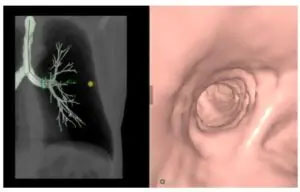Did you know that lung cancer is the second most common cancer among men and women in the United States, and it’s the leading cause of cancer-related deaths? In fact, according to the American Cancer Society, more people die of lung cancer than colon, breast and prostate cancers combined.
But that doesn’t have to be the case. In recognition of World Lung Cancer day, let’s shine a light on one of our most important tools — screening.
The Lung Cancer Foundation of America’s website states that new research, diagnosis, and treatment breakthroughs in the last 10 years have brought new hope to patients and their families. Lung cancer screening is one of the most powerful tools we have in stopping lung cancer, with the potential to save tens of thousands of lives if everyone at risk is screened.
When the disease is detected early, lung cancer treatment can be more effective and the chances of survival can improve greatly. The trouble is that many people usually don’t experience any symptoms until the disease reaches more advanced stages.
That’s why annual lung cancer screenings are so important for those at high risk for developing the disease. It could be the key to discovering lung cancer early when it’s easier to treat.
The U.S. Preventive Services Task Force (USPSTF) revised the recommended ages and pack-years for lung cancer screening in March of 2021. It expanded the age range to 50 to 80 years (previously 55 to 80 years), and reduced the pack-year history to 20 pack-years of smoking (previously 30 pack-years). That change means close to 15 million people, nearly twice the previous number, will be eligible for the scans.
With the expansion of lung cancer screening eligibility and as we strive to recover from the Covid-19 pandemic, imaging centers may experience new challenges to schedule, screen, report, and follow-up on the increasing number of lung imaging exams.
This is a priority topic for Fujifilm because while we innovate a host of chest/ lung imaging solutions – like DR, CT, MR, ultrasound, and bronchoscopes – we also understand that workflow efficiencies and ease of program management are crucial with increasing patient volumes, and offer solutions to address these issues through our Synapse Enterprise Imaging portfolio.
Fujifilm’s Synapse Enterprise Information System (EIS) leverages native Lung Cancer Screening and Tracking tools, designed to streamline workflows and optimize patient care. Our technology helps manage the growing number of patients needing lung screening as well as speed American College of Radiology (ACR) data reporting so specialists have more time to interact with their patients.
Synapse EIS provides comprehensive tracking and reporting dedicated to the management of lung screening programs.
Features include:
And, with integration to ACR’s Lung Cancer Screening Registry (LCSR) API (Application Programming Interface), data is automatically transferred and submitted to the LCSR, further reducing manual management. Synapse EIS supports the latest LCSR API integration, version 1.5.
Fujifilm’s Synapse 3D provides a comprehensive suite of applications, including general-use and specialty tools, that seamlessly perform advanced image visualization and analyses. Designed with extensive clinical input, Synapse 3D incorporates intuitive, logical workflows that guide users to efficient and accurate results, helping to drive more-informed evaluations and improved patient care.
Relevant applications:
Oncology Viewer identifies and tracks temporal changes in solid tumors using RECIST criteria.

Lung Analysis Scope identifies three optimal paths leading to a lung lesion.

At Fujifilm, we never stop innovating for a healthier, more sustainable world. For more information on Synapse 3D or Synapse Enterprise Information System and the benefits it can bring to your imaging center, contact us here.
To learn more about lung cancer screening, the American Lung Association has many resources available, offers a lung cancer screening eligibility quiz and encourages those concerned about their risk to speak with their doctor.